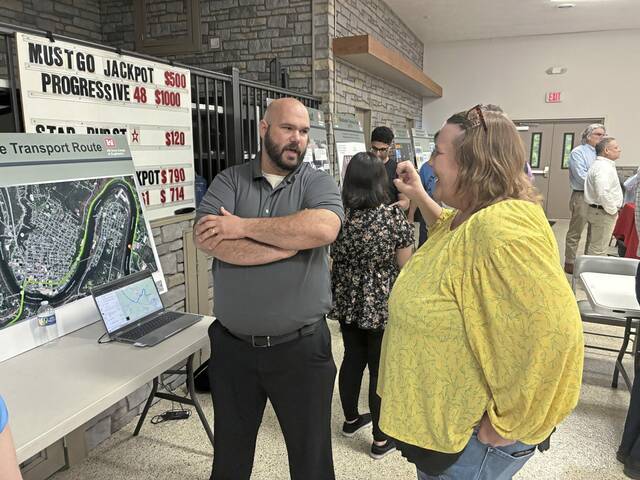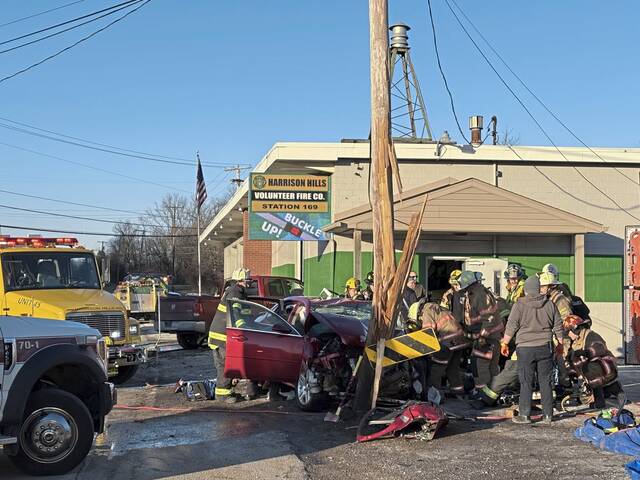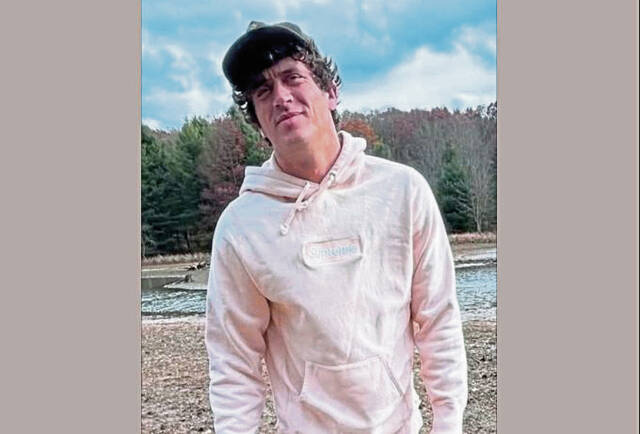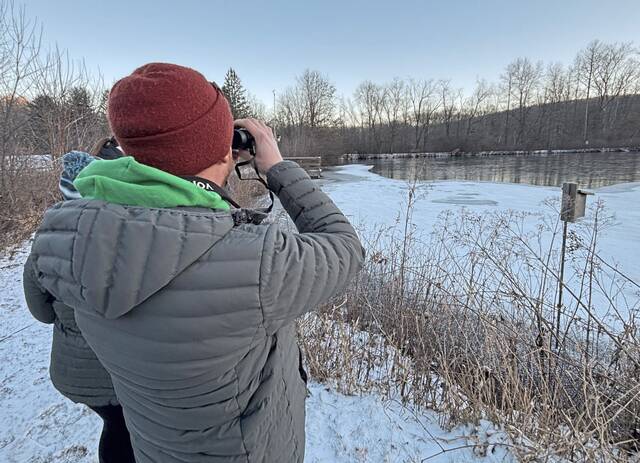Parks Township residents are concerned, even skeptical, that government contractors can remove 33,000 cubic yards of nuclear waste, package it and ship it to Utah without harming their community.
Army Corps of Engineers officials on Thursday sought to allay those fears with more details on how they plan to safely truck the waste to Lawrence County and, from there, ship it by railroad to Utah.
The vast majority of the waste buried in 10 trenches at what the government calls the Shallow Land Disposal Area in Parks does not pose an immediate hazard from any exposure, said Steve Vriesen, who is project manager for what will become a six-year effort to remove radioactive and toxic waste from the 44-acre site along Route 66 near the Kiski River.
“Our number one priority is safety,” said Col. Nick Melin, commander of the Army Corps of Engineers Pittsburgh District.
Melin told about 130 people who packed the Parks Township Fire Hall on Thursday night the Corps has brought the government’s best experts in remediating nuclear waste dump sites — personnel from the Corps’ Buffalo district. The estimated $350 million project “will be one for the history books,” Melin said.
The Corps is remediating property currently owned by BWX Technologies Inc., formerly Babcock & Wilcox. The radioactive waste was dumped there between 1960 and 1970 by the Nuclear Materials and Equipment Corp. from the production of materials primarily for nuclear-powered submarines and power plant fuel, according to the Corps.
Excavation of the first trenches should begin in late fall or winter. The timeline for excavating the waste, transporting it and completing the project will be determined by how long it takes to remove some special material thought to be in the trenches — radioactive rods and nuclear material that was part of the Manhattan project, Vriesen said.
The Manhattan Project was the code name given to America’s development of the atomic bomb during World War II.
The work will go slowly, Vriesen said. The top six inches of soil will be scanned before being excavated. The material, at half-cubic yards at a time, will be placed into special bags, then inside sealed metal containers. Those containers will be cleaned before being placed on a truck headed for Wampum, Lawrence County, where it will placed on a train bound for a nuclear waste disposal site in Clive, Utah, Vriesen said.
Even when the radioactive materials are finally removed, it could take a few more years to completely remediate the property, said Carol Vernon, an Army Corps of Engineers spokeswoman. The buildings and fencing erected for the cleanup will have to be removed, as well as roads that were constructed for the project, Vernon said.
To keep the community safe, Vriesen said, special air filtration systems will be installed in the building where the trenches are under roof. There will be nine air monitors around the site, one off-site, plus the state Department of Environmental Protection will have its own monitors as independent verification that the air is not carrying radioactive particles.
Workers at the site will be wearing protective clothing to protect themselves and they’ll change out of that clothing before leaving the site.
Some at the meeting questioned the need for excavation at the site, suggesting the Corps should just cap the trenches and cover the material, rather than digging it up.
“I want it to be ‘Chernobyled,’” said Janine Michael of Oakmont, referring to the nuclear power plant in Ukraine that was the site of a deadly nuclear accident and encased in concrete.
Michael said her father worked at NUMEC.
Vriesen was grilled by some residents about why, if the material has to be removed, it was not excavated and removed several years ago. The material, as it was in the ground inside a fenced-in area, did not pose a hazard to residents, Vriesen said.
The health assessment of the site began in 2001, and it was determined that it had to be removed, Vriesen said.
“It was determined it was an unacceptable risk to leave it long-term,” Vriesen said, pointing out that mines underneath the site could collapse, causing nuclear waste to fall into the mines and possibly allowing it to spread.
In the case of an emergency, Parks Township Fire Chief Joel Brown said, local officials would contact Armstrong County 911, which would activate neighboring first responders to help with an evacuation.
Planning for cleanup of the site began in 2002, when the property was added to the federal Formerly Utilized Sites and Remedial Action Program, which is aimed at cleaning up toxic sites that had been used by the federal government or companies working for the government.








